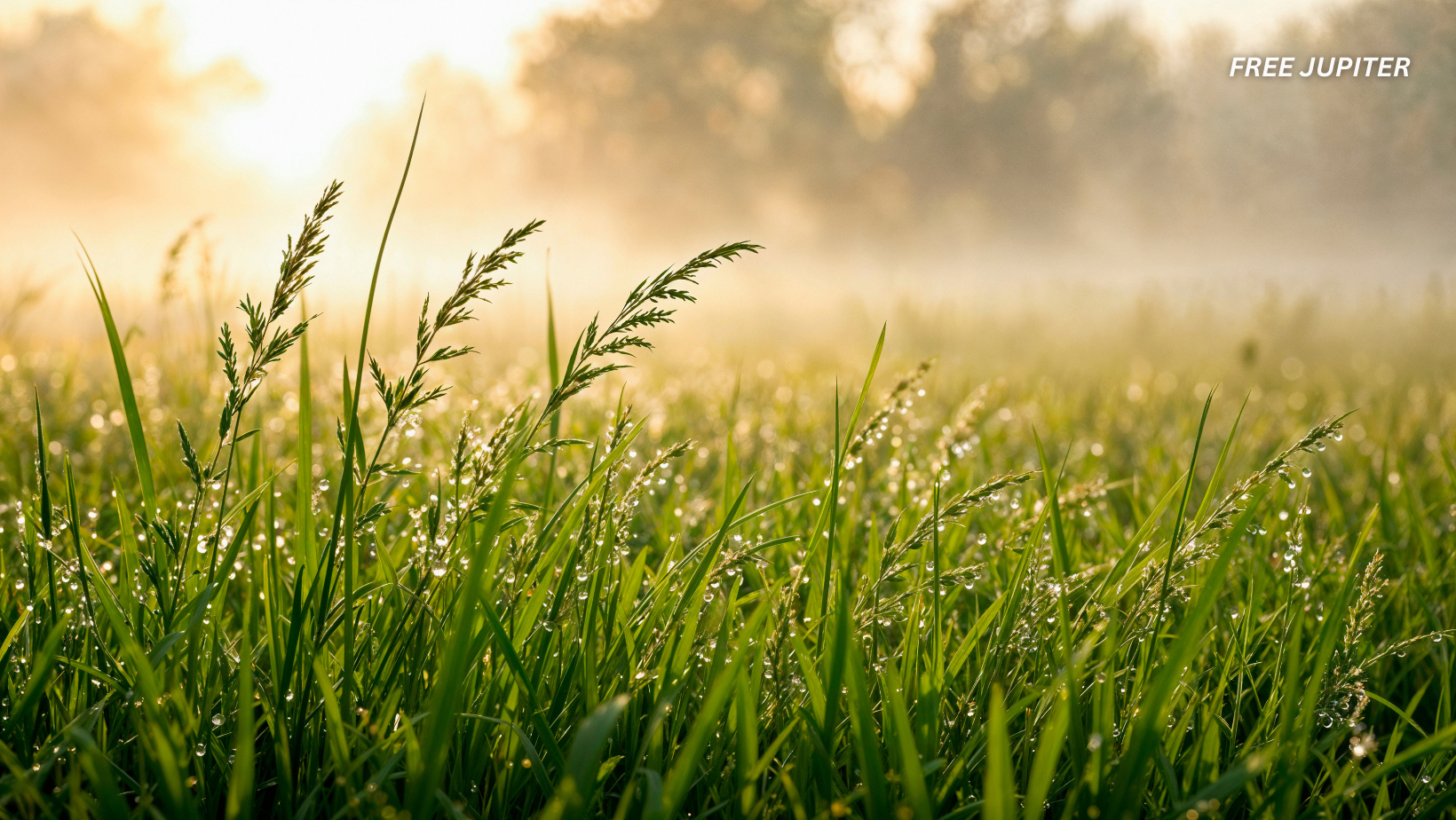Friendly Note: FreeJupiter.com shares general info for curious minds 🌟 Please fact-check all claims—and always check health matters with a professional 💙
Every spring, as lawns bounce back from their winter nap and burst into green, a curious image often makes its rounds on social media—close-up shots of grass that, under a microscope, look like they’re smiling.
It’s both odd and charming. Naturally, the internet eats it up. But what are these so-called grass “faces,” and why do they show up when it rains?
The Truth Behind Those “Smiley” Faces
Sorry to burst the bubble, but grass isn’t actually grinning at you. What you’re seeing under the microscope are parts of its internal plumbing system—specifically, the vascular bundles.
Think of these bundles as the grass’s own version of straws or pipes, ferrying water and food to help it grow. Inside each of these bundles are two major players: xylem and phloem.
- Xylem is like a water elevator, pulling moisture up from the roots to the tip of the grass blade.
- Phloem works more like a snack delivery system, moving nutrients up or down as needed.
When you cut a thin cross-section of a blade of grass and look at it under a microscope, these tubes appear as tiny circles. Sometimes, their arrangement looks like little eyes and a mouth—which is what creates those quirky “faces.”
How to Make the Magic Happen Yourself
Want to see these strange little grass faces for yourself? It’s easier than you think. All you need is a basic tool called a Foldscope (a super-affordable paper microscope), some patience, and a few crafting skills.
Here’s a quick how-to:
- Slice it thin: Cut a super-thin slice of grass so that light can shine through it. This is essential—if the slice is too thick, everything looks like a green blob.
- Nail polish trick: To stop your grass slice from flopping over, place a tiny drop of clear nail polish on a microscope slide.
- Careful placement: Use tweezers to gently lay the grass on its side in the polish. Try not to squish it!
- Seal it in: Place a cover slip on top (gently—don’t press!), then let it dry.
- Magnify: Pop it under your Foldscope and explore.
Read more: Scientists Reveal What That Pleasant Smell Really Is After It Rains
So… Is My Lawn Actually Smiling?
Not exactly. When one Foldscope enthusiast tried this experiment, they didn’t find a field of grins—they found ghostly faces staring back instead. It turns out that depending on how the tubes line up, the “expressions” can look happy, creepy, or just plain weird.
Still, it’s kind of magical how something so ordinary can turn extraordinary when viewed up close.
Why It’s More Than Just Cute
This isn’t just a fun science trick for curious minds—it’s a perfect example of how science is all around us, hiding in plain sight. Even your backyard grass holds tiny secrets waiting to be revealed. Tools like the Foldscope make it easy for kids, students, hobbyists, and grown-up science lovers to peek into this hidden world.
Plus, it’s a great reminder: nature has a quirky side. Sometimes, it even looks back at you.
Why Do Leaves “Bleed” When Cut?
A Peek Into the Plant’s Secret Circulatory System
If you’ve ever trimmed a plant or accidentally snipped a leaf, you might’ve noticed something strange—tiny droplets of liquid oozing from the cut edge. It almost looks like the plant is bleeding. But don’t worry, your houseplant isn’t in pain—this natural response is actually part of its built-in survival system.
So, What’s Actually Leaking Out?
That liquid you see is called sap. It’s not blood, but it plays a similar role in the plant world. Sap is a mixture of water, sugars, minerals, hormones, and other nutrients, and it travels through the plant’s internal transport system: the xylem and phloem.
- Xylem sap moves water and minerals from the roots up to the leaves.
- Phloem sap carries sugary nutrients (created during photosynthesis) from the leaves down to the rest of the plant.
When you cut a leaf or stem, you’re slicing through these tiny highways. And just like how water spills out of a pipe when it’s punctured, sap flows out of the damaged areas.
Read more: Scientists Say Cancer Can Now Be Detected Years in Advance with Simple Blood Test
Why Does the Sap Sometimes Drip Slowly—and Sometimes Not at All?
The amount and speed of the “bleeding” depends on a few things:
- Time of day: Plants are most active in the morning when they’re drawing in water.
- Type of plant: Some plants—like rubber trees or poinsettias—have thicker, milkier sap. Others barely drip.
- Where the cut is: Cutting near the base of a plant, where the sap pressure is higher, can cause more noticeable dripping than trimming the outer tips.
Is This Dangerous for the Plant?
Not usually. Plants have evolved clever ways to handle injuries. As soon as a cut is made, the plant starts healing. Cells near the damage rush to form a protective barrier, often with help from substances like resin or latex, which can seal off the wound and deter insects or infection.
In some cases, plants even use this “bleeding” to their advantage. Certain species, like figs or poppies, produce sap that’s slightly toxic or bitter to animals, making them think twice before taking another bite.
Can We Use Sap for Anything?
Absolutely. Humans have been tapping into plant sap for centuries. Some of the most famous examples include:
- Maple syrup, which comes from the sap of sugar maple trees.
- Natural rubber, harvested from the latex-rich sap of rubber trees.
- Medicinal extracts, like those from aloe vera, used to treat burns and skin conditions.
So next time you see a leaf “bleeding,” you’re witnessing an ancient process—one that keeps the plant alive and sometimes even benefits us, too.
Share Your Tiny Discoveries
From Backyard Blades to Kitchen Veggies—There’s a Whole World Waiting to Be Seen
One of the most exciting parts of using a microscope—especially something as accessible as a Foldscope—is the sense of discovery it unlocks. Suddenly, the ordinary becomes extraordinary. A blade of grass transforms into a tiny alien landscape. A slice of onion reveals shimmering cell walls. Even a speck of pond water can be crawling with microscopic life.
And here’s the best part: you don’t need a science lab to join the adventure. Whether you’re a student, teacher, curious parent, or hobbyist, your surroundings are packed with hidden wonders waiting to be explored.
Read more: Rescued Baby Parrot Only Wants Cuddles During His First Week in New Home
Why Your Observations Matter
Even if you’re just peeking out of curiosity, your findings can have value. Citizen science—where everyday people help collect and share data—has played a huge role in monitoring environmental changes, spotting new species, and even identifying microplastic pollution in unexpected places.
Plus, sharing your discoveries might inspire someone else to start exploring, too. Curiosity is contagious.
So go ahead—grab that leaf, scoop up a drop of water, or cut into that celery stick. You never know what microscopic magic is hiding in plain sight.










